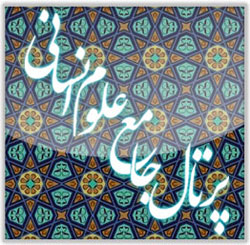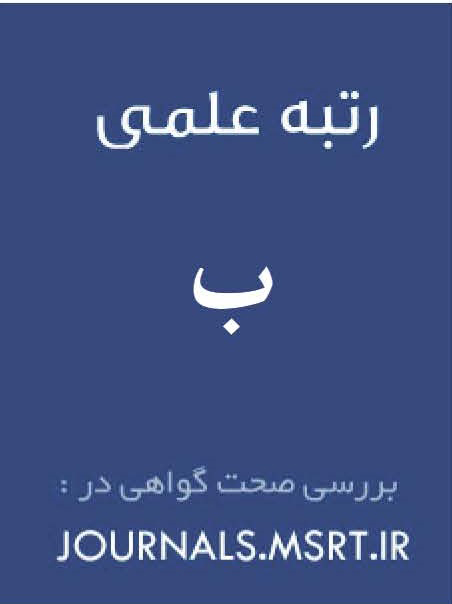Examining the Love of the World in the Philosophical Thought of Nasir Khusraw and Qutb al-Din Shirazi
Keywords:
Love, the world, Nasser Khosrow, Qutb al-Din Shirazi, the pursuit of perfectionAbstract
Love is an element that, when associated with any phenomenon, creates favorable psychological and spiritual conditions in human beings. However, at times, excessive attachment to one's interests may overpower the individual and deprive them of spiritual joy. This study aims to examine the concept of ḥubb al-dunyā (love of the world) from the perspectives of Nasir Khusraw and Qutb al-Din Shirazi. Employing a descriptive-analytical method and relying on library sources, the research seeks to explain and extract thematic similarities concerning the love of the world in the thought of these two philosophers. Nasir Khusraw, through reliance on reason and rational argumentation, and Qutb al-Din Shirazi, through the lens of Sufi spiritual journeying, regard ḥubb al-dunyā as a consequence of the carnal self (nafs) and as an obstacle to attaining moral virtues. Both thinkers consider the human being to possess two dimensions of life—worldly and otherworldly—and they hold that access to the blessings of the hereafter depends on the performance of righteous deeds and the renunciation of worldly pleasures. The findings indicate that through self-purification (tahdhīb al-nafs) and faith, the human being can distance themselves from attachment to the transient world and pursue the ideal of ultimate perfection.
Downloads
References
Allport, G. W. (1961). Pattern and Growth in Personality. New York, NY: Holt, Rinehart & Winston. https://ia601408.us.archive.org/30/items/in.ernet.dli.2015.199562/2015.199562.Pattern-And-Growth-In-Personality_text.pdf
Bugental, J. F. T. (1965). The Search for Authenticity: An Existential-Analytic Approach to Psychotherapy. New York, NY: Holt, Rinehart & Winston. https://a.co/d/4cz3O4L
Bugental, J. F. T., Schneider, K. J., & Pierson, J. F. (2014). The Handbook of Humanistic Psychology: Theory, Research, and Practice. California: SAGE Publications. https://doi.org/https://doi.org/10.4135/9781483387864
Darabi, J. (2018). Theories of personality psychology (Comparative approach). Tehran: Ayij Publishing.
Deci, E. L., & Ryan, R. M. (1980). Self-determination Theory: When Mind Mediates Behavior. The Journal of Mind and Behavior, 1(1), 33-43. https://www.jstor.org/stable/43852807
Feast, G. J., Roberts, T., & Face, J. (2012). Theories of personality. Tehran: Ravan Publishing.
Frankl, V. E. (1984). Man's Search for Meaning: An Introduction to Logotherapy. California: Touchstone. https://a.co/d/7QFIZ1c
Ibn Manzur, M. b. M. (1993). Lisan al-Arab (Vol. 2). Beirut: Dar al-Sader.
Kamalvand, P., & Mohammad Ali Nejad, R. (2016). Comparative conceptualization of self-esteem in the Quran and humanistic psychology. Journal of Counseling and Psychotherapy Culture, 7(27), 1-32.
Makarem Shirazi, N. (1995). Tafsir-e Namuneh (Vol. 14). Tehran: Dar al-Kutub al-Islamiyyah.
Maslow, A. H. (1968). Toward a psychology of being. New York: Insight Books; D. Van Nostrand Company. https://archive.org/details/towardpsychology1968masl/page/n8/mode/1up
Maslow, A. H. (1987). Motivation and personality. Longman Publishers. https://a.co/d/4FlO206
Maslow, A. H. (1993). The Farther Reaches of Human Nature. Louisiana: Arkana. https://a.co/d/fys7dNN
Miri, S. M. H., & Khademi Afzal, F. (2018). An examination and critique of Abraham Maslow's view on self-actualization with an emphasis on Islamic sources. Journal of Comparative Exegesis Studies, 4(7), 57-78.
Noorbala, A. A. (2011). Mental-social health and strategies for improvement. Iranian Journal of Psychiatry and Clinical Psychology, 17(2), 151-156.
Pourafkari, N. (2003). Comprehensive dictionary of psychology and psychiatry and related fields. Tehran: Contemporary Culture Publishing.
Raghib Isfahani, H. b. M. (1993). Al-Mufradat fi Gharib al-Quran. Damascus, Beirut: Dar al-Qalam.
Rogers, C. R. (1995a). On Becoming a Person: A Therapist's View of Psychotherapy. California: HarperOne. https://a.co/d/cArrBd8
Rogers, C. R. (1995b). A Way of Being. California: HarperOne. https://a.co/d/78G7jj7
Rosenberg, M., & Owen, J. (2020). Self-esteem and its role in resilience. London: Sage Publications.
Schultz, D. P., & Schultz, S. E. (2012). Theories of personality. Tehran: Virayesh Publishing.
Smith, E. R., & Mackie, D. M. (2021). Social psychology. New York: Psychology Press.
Snyder, C. R., & Lopez, S. J. (2014). Positive Psychology: The Scientific and Practical Explorations of Human Strengths. New York: SAGE Publications. https://a.co/d/30RzFhv
Tabatabai, M. H. (1997). Al-Mizan (Vol. 6). Qom: Dar al-Ilm.
Veysi, O., Amiri, M., & Mohammadi, M. (2021). A comparative study of the concept of mental health from the perspective of Islam and modern psychology. Journal of New Advances in Psychology, 4(40), 23-45.
Dashti, A., & Mahouzi, A. (1983). A portrait of Nasir Khusraw. Tehran: Javidan Publishing.
Delshad Tehrani, M. (2019). The school of Mehr: Principles of education in Nahj al-Balagha. Tehran: Darya Publishing.
Esfandiar, R. (2013). The political thought of Sheikh Shahab al-Din Suhrawardi. Motale'at-e Siyasi, 1(3), 121-138.
Farmahini Farahani, M. (2011). Education in Nahj al-Balagha. Tehran: Ayij Publishing.
Ghazali, M. B. (2013). Revival of the religious sciences. Tehran: Scientific and Cultural Publishing.
Goharin, S. S. (1997). Explanation of Sufi terminology. Tehran: Zawar Publishing.
Golestani, S. H. (1991). Islamic philosophy from the beginning to the end of the fifth century AH. Isfahan: Mashal Publishing.
Hafez Nia, M. R. (2017). An introduction to research methods in the humanities. Tehran: Samt Publishing.
Hafez, S. M. (1999). Divan-e-Ash'ar. Tehran: Safi Ali Shah Publishing.
Halabi, A. A. (1982). The history of Iranian philosophers from the beginning of Islam to the present. Tehran: Zawar Publishing.
Kardan, A. M. (2004). An introduction to the philosophy of Islamic education (Vol. 1). Tehran: Samt Publishing.
Mirghaderi, S. F., & Gholami, M. (2009). A comparative study of the image of the world in the poetry of Nasir Khusraw and Abu al-'Ala. Journal of Comparative Literature, University of Bahonar Kerman, 1(1), 207-236.
Naziri Nishaburi, M. H. (2000). Divan-e-Ash'ar. Tehran: Negah Publishing.
Qubadiani, N. K. (1984). Jami al-Hikmatayn. Tehran: Tahouri Publishing.
Qubadiani, N. K. (2005). Khan al-Ikhwan. Tehran: Asatir Publishing.
Qubadiani, N. K. (2018). Zad al-Masafirin. Tehran: Asatir Publishing.
Saadi, A. M. M. (1995). Ghazals of Golestan. Tehran: Sokhan Publishing.
Safa, Z. (1993). History of Persian literature (Vol. 3). Tehran: Ferdows Publishing.
Safa, Z., & Torabi, M. (1995). History of Persian literature (Vol. 2). Tehran: Ferdows Publishing.
Shayegan, D. (1978). Religions and philosophical schools of India (Vol. 1). Tehran: Amir Kabir Publishing.
Shirazi, Q. M. B. (2007). Dar al-Taj li Gharat al-Dabbaj. Tehran: Hikmat Publishing.
Suhrawardi, S. D. (2001). Collected works of Sheikh al-Ishraq (Vol. 1 & 2). Tehran: Research Institute for Human Sciences and Cultural Studies.
Tabatabai, S. M. H. (2019). Principles of philosophy and the method of realism (Vol. 5). Tehran: Sadra Publishing.
Zarinkoub, A. (2002). The value of the heritage of Sufism. Tehran: Amir Kabir Publishing.
Downloads
Published
Submitted
Revised
Accepted
Issue
Section
License
Copyright (c) 2025 Islamic Knowledge and Insight

This work is licensed under a Creative Commons Attribution-NonCommercial 4.0 International License.







